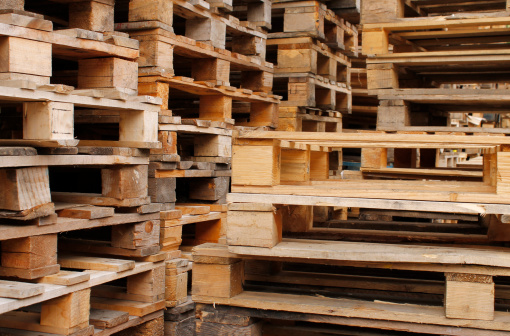Demand for low-grade hardwood, typically used in the manufacture of pallets, is very high right now. Hardwood sawmills are working to increase supply, but have fallen short of demand to date. That makes it tough for pallet manufacturers to get the lumber they need. Here are seven ways that pallet manufacturers can help themselves in procuring lumber:
1. Shop Around
This is where having a large network of suppliers is a distinct advantage. A well-connected manufacturer will have business dealings with a number of mills, increasing the chances that at least one of them should be able to fill the order.
2. Keep It Personal
Pallet manufacturers can’t afford to wait until inventory is running low to start talking to mill operators. Good working relationships – personal relationships – are built over many years, even decades, and only come with experience. Those relationships can pay off when issues arise, such as when no one seems to have enough lumber to sell.
3. Pay a Premium
The least-attractive option, but one that always exists, is simply to outbid the competition. There are many layers of customers in the hardwood market. Most pay more for raw material than those in the pallet industry. Once a pallet manufacturer pays more for material, the costs MUST be passed on to the customer due to tight margins. That’s not always an ideal solution to the problem of supply.
4. Cash On Delivery
Some smaller mills will give priority treatment to buyers who can pay on the spot instead of waiting to be invoiced. If cash flow isn’t a problem, this is a viable option.
5. Address Transportation Issues
The mill might have the lumber, but not the available transportation to ship it in time. If the pallet manufacturer can arrange shipment, there is a potential benefit.
6. Take Advantage of Market Conditions
This is another place where stable business relationships with mills pay off. An experienced, well-connected manufacturer will capitalize on better market conditions and build inventory before access to lumber becomes a serious concern. Good cash flow is required in order to build supply for future orders.
7. Vertically Integrate
Investing in a sawmill is an option. It requires careful analysis of the potential ROI, and obviously requires a substantial up-front investment. For most, this isn’t really an attractive investment. Nevertheless, some large pallet manufacturers could justify the cost of operating their own mills.
Ultimately, it comes down to connections and relationships, both business and personal. Both come with years in the business. An experienced and respected pallet manufacturer has a better opportunity to secure the lumber needed, while keeping costs to customers as low as possible.





